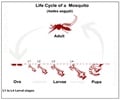Carbon Foot Print
Some people are not aware that their daily actions in some way directly affect the environment. We need to learn about carbon footprints in order to reduce carbon emission into the atmosphere.
A carbon footprint is a measure of the total amount of green house gases (GHG) produced in order to directly or indirectly support human activities. It is generally expressed in equivalent tons of carbon dioxide (CO2).
A person’s carbon footprint is the sum of all emissions of CO2 (carbon dioxide), which were generated by the person’s activities in a given time frame—usually calculated for a year.
The world-wide average for carbon emission is 4 tons of carbon dioxide (CO2) per person per year.
Everyday activities like driving a car releases CO2 because of the fuel the engine burns. Heating or cooling a place involves CO2 emission because CO2 is produced while generating electricity from fossil fuels. Even simple tasks like buying food and goods leave a carbon footprint because the production of food and goods will emit CO2.
For Example:
- For 1 UK gallon of petrol consumed, 10.4 kg carbon dioxide is emitted.
- For 1 (US) gallon of gasoline consumed, 8.7 kg carbon dioxide is emitted.
- For 1 liter diesel consumed 2.7 kg of carbon dioxide is emitted.
- Following this table, if a car consumes 7.5 liter diesel per 100 km, then driving a distance of 300 km consumes 3 x 7.5 = 22.5 liter diesel.
- 22.5 x 2.7 kg = 60.75 kg CO2 is added to the user’s personal carbon footprint.
A German study suggests that meat eaters’ diet is responsible for almost twice the green house gas emissions than those of vegetarians. The emissions include methane that is produced by animals themselves along with other emissions from food production that includes manufacturing animal feed and fertilizer and the use of farmland. So giving up meat could reduce your carbon footprint to a great extent.
The graph from the World Resources Institute (WRI) shows the total carbon emission in million tons by country for the year 2002. The CO2 emissions for the year 2006 are roughly 12% to 15% higher than the figures shown in the graph.
World Resources Institute (WRI) statistics further show that:
- On an average all industrialized nations emit about 11 tons of carbon dioxide (CO2) per person per year
- A world-wide average emission of maximum 2 tons of carbon dioxide (CO2) per person per year has to be targeted
- The International Energy Institute (IEA) has predicted a further increase of the world-wide CO2 emissions by 55% in the next 25 years if immediate action is not taken to control global warming. Even if vigorous measures are taken to reduce global warming, IEA predicts a growth of the CO2 emissions by 28% from the year 2004













